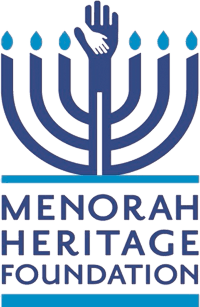2020 Antisemitism in Schools Survey
Motivation and Purpose
Based on anecdotal evidence, JCRB|AJC knew that Jewish students in our region reported facing antisemitism in their schools. However, we did not know how widespread this experience was, or what antisemitism looked like day-to-day for students.
In August 2020, we developed and distributed a survey for middle and high school students in Kansas and Western Missouri so that we could use survey results to better target our programming and response to antisemitism in schools.
Key Findings
We received 66 responses, from a diverse range of students from public and private schools around the Greater Kansas City area.
A majority of respondents were high school students; 35% percent were middle school students.
- Only 29% of students said that antisemitism was “not a problem at all” in their school
- 53% of students said they have experienced or witnessed antisemitism at school “one time” or “more than one time; 27% of students said they have been specifically targeted in-person; 11% of students said they have experienced or witnessed antisemitism online from other students
- 75% of students have experienced or witnessed at least one form of antisemitism at school, the most common being comments or "jokes" invoking the Holocaust or Jewish stereotypes, followed by antisemitic graffiti such as swastikas drawn on lockers and in textbooks
- Only 41% of respondents said they are “always” comfortable expressing their Jewish identity publicly at school, while 42% said “most of the time, but not always,” and 5% said they are “rarely comfortable.”
Major Takeaways
Overall, we see that Jewish students in our region face antisemitism on a regular basis in their schools. It appears in various forms, from the commonplace telling of “Holocaust jokes” amongst students, the drawings of swastikas on desks and in textbooks, and the propagation of Jewish stereotypes and antisemitic conspiracy theories.
Recognizing and Acknowledging Antisemitism
When asked if they had experienced or witnessed antisemitism at school, 53% of students said they had personally experienced or witnessed antisemitism “one time” or “more than one time” at school. However, when asked to select which types of antisemitism they had experienced or witnessed at school, nearly 75% of students selected at least one type of antisemitism.
The discrepancy between the responses to these different questions might indicate that students misunderstand what antisemitism is when not presented with specific examples, or that students might be dismissive of categorizing their own experiences as antisemitism. In particular, this seems apparent when students describe their exposure to antisemitic “jokes;" students might not even recognize some comments and "jokes" as antisemitic due to how casual and commonplace such antisemitism is for them in their schools.
Expressing Jewish Identity
Only 41% of respondents said they are “always” comfortable expressing their Jewish identity publicly at school, while 42% said “most of the time, but not always,” and 5% said “rarely comfortable.” Any discomfort in expressing their Jewish identity publicly might suggest that those students fear becoming targets of antisemitism.
Jewish Holidays
In written comments, students explained the ways some teachers and schools are not accommodating them accordingly during Jewish holidays. A majority of students indicated that they would feel more comfortable expressing their Jewish identity publicly at school if they knew their teachers understood and cared about Jewish holidays.
Moving Foward
Moving forward, we will be addressing Jewish students’ concerns by working to prepare them to effectively respond to antisemitism. We will also be strengthening our work with educators, to ensure they have an appropriate understanding of antisemitism and the Jewish holidays so they can be allies in confronting and preventing antisemitism in their schools.
To learn more about JCRB|AJC's new education strategy, Prepare to Respond, Educate to Prevent (PREP), please click here.





